|
Hotels
As labeled for the celebration of birthday, both of the hotels were high-class, the pride of the travel agency.
The first night (Sep. 27) was at Hotel Ryokusui-tei in Akiu Spa.
Akiu Spa is on the west side in Sendai City.
We arrived at Ryokusui-tei Hotel there after 1-hour drive from Matsushima.
It was surrounded by the forest.
Entering it, the broad and solemn lobby dazzled us.
Our room on the 7th floor had luxurious feeling with relaxation which was
beyond us. The garden below through the window looked chic and elegant.
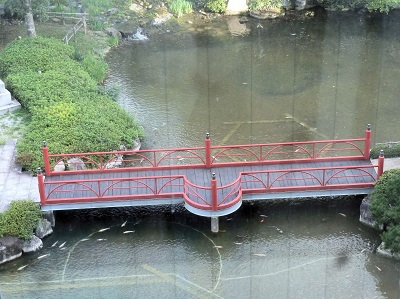
I went to the hot spring bath of the hotel's pride right away.
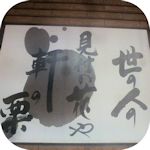 The bath consists of the large bathroom "Ryokusui Bath" and the
open bath "Kagaribi Bath". The bath consists of the large bathroom "Ryokusui Bath" and the
open bath "Kagaribi Bath".
The back wall of the large bathroom was decorated with the four tiled haikus
by Matsuo Basho like:
"Ta ichimai uete tachisaru yanagi kana"
(They sowed a whole field, and only then did I leave Saigyo's willow tree.)
"Yo no hito no mitsukenu hana ya noki no kuri"
(Blossoms unnoticed by people of this world -- Chesnuts by the eaves.)
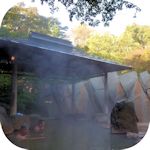 The open bath had a fine view. Covered by the hot spring smell, it delivered
the comfort of eyes. It was too early to see the Kagaribi (torch) on the
side. The open bath had a fine view. Covered by the hot spring smell, it delivered
the comfort of eyes. It was too early to see the Kagaribi (torch) on the
side.
The dinner was at the Japanese large room "Ajisai" (Hydrangea) on the 4th floor.
As both of our couple had some trouble at the knees, we sat on legless
chairs to taste the dish thoroughly and slowly.
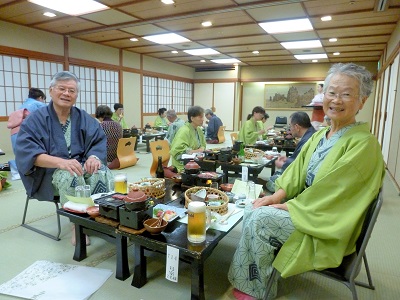
We strolled for a while around the garden after dinner, and went to bed.
I fell into sleep listening to the long rakugo "Jigoku hakkei mouja
no tawamure" (8 sights in the hell) by Katsura Beicho.
Since the Tohoku Great Eathquake 4 years ago, this area along the Pacific
Ocean seemed to be suffering from the damage caused by a rumor in addition
to the slow recovery of destroyed facilities
But Hotel Ryokusui-tei did not give us such feeling. It was busy with so
many guests, contrary to my expectation.
The breakfast hall was really full. But nobody seemed to feel tight nor troublesome in this atmosphere.
It was a hospitable hotel.
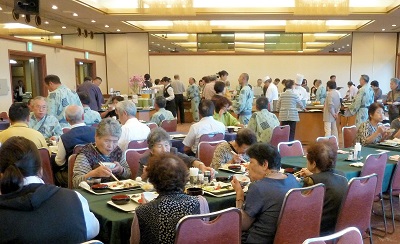
Ryokusui-tei Hotel, Other Pictures
-----
We stayed at Hotel de Premiere Minowa near Inawashiro Lake the next night.
Minowa Ski Run was near at an altitude of 1,050 - 1,500 meters.
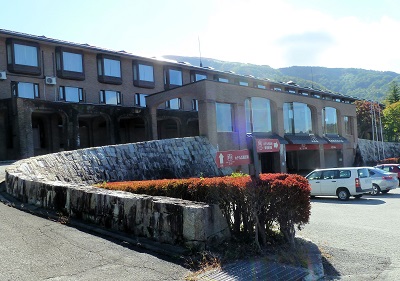
This hotel was European-style and surely high-class. The large lobby on
the 1st floor was luxury, also used for a wedding ceremony and as a concert
hall. It was filled with noble atmosphere like in a different world for
me.
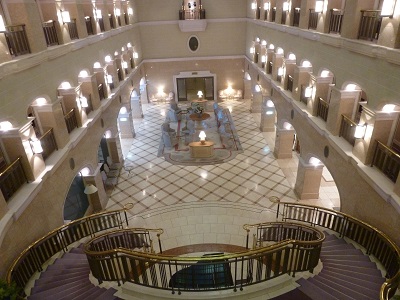
Our room was Western style, which was also more than comfortable not to
match us. Sound sleep would be guaranteed.
We had nearly 2 hours until dinner at 6:00 p.m. So in the first place I went to a hot-spring called the Soft-Water Bath of Minowa.
I finished it quickly and soaked my shoulders deep in the open bath. Surrounded
with the green nature, it relaxed me and released me from everything.

Dinner was at "Le Bandai" on the 1st floor. The menu was French
dishes with local vegetables, sashimi and dish cooked in a pot at the table.
I ate them with wine and beer.
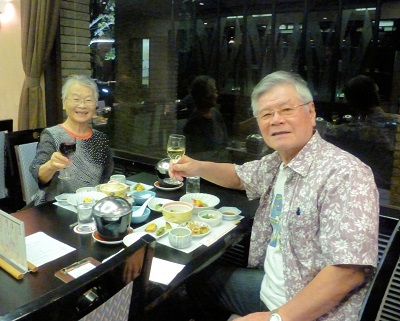
We saw the harvest moon the previous night at Ryokusui-tei in Akiu Spa.
We would probably see the supermoon tonight, though not familiar with the
name yet.
Our couple got out of the entrance after dinner and looked up at the night
sky in vain. It was wholely covered by dark clouds.
After returning home, I found an interesting article in the document handed
to me from a friend of the English class. It was about the supermoon.
I am going to write something at the end.
Hotel de Premiere Minowa, Other Pictures
-----
Incidentally, this trip was with lunch for 3 days. The first day was a
box lunch in the bus and the last day was "soba of five steps"
at the restaurant Iwahashi in Inawashiro.
The lunch on the 2nd day was gorgeous sushi at a sushi restaurant in Shiogama.
It was superb.
This area was damaged by the Great East Japan Earthquake and the accompanied
tsunami, and has not been wholely recovered yet.
Nevertheless, the master pleasantly received us with good hospitality.
We had a long talk with a wonderful aftertaste.
|